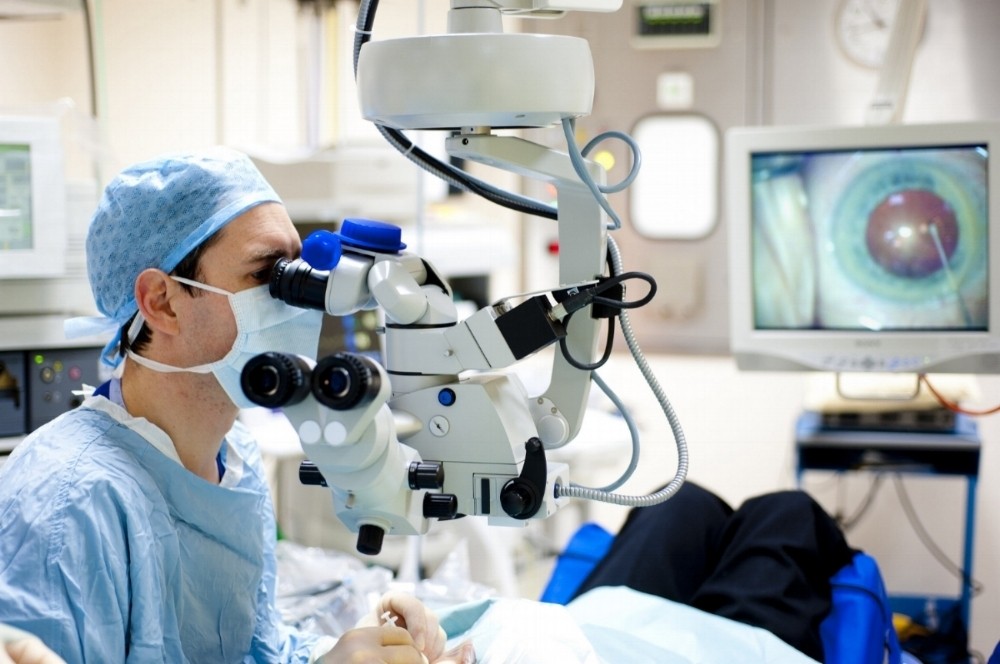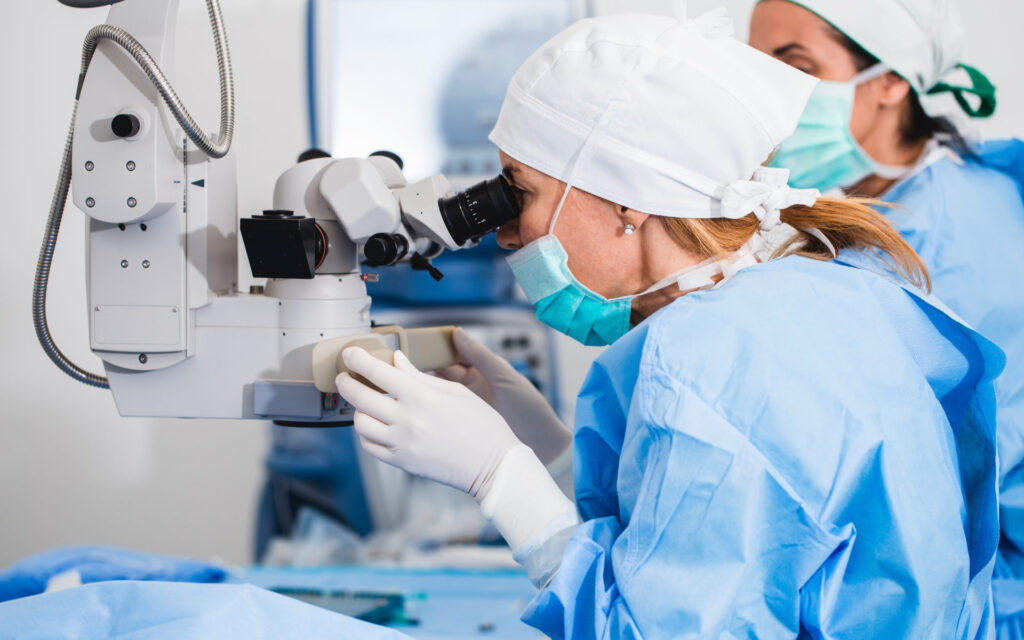Glaucoma is a complex eye condition that affects millions of people worldwide. As a retinal specialist, understanding the intricacies of glaucoma and the latest surgical techniques is crucial in providing the best possible care for patients. In this article, we will explore advanced glaucoma surgery techniques and delve into the role retinal specialists play in the treatment of this sight-threatening disease.
Understanding Glaucoma: A Brief Overview And Treatment
When devising glaucoma treatment plans for glaucoma patients, retinal specialists take a personalized and tailored approach that accounts for the individual characteristics of each case. Factors such as the patient’s age, general health condition, and the progression of the disease are carefully evaluated to determine the most suitable course of action.
The Role of the Retina in Vision
Before delving into the specifics of glaucoma, it is important to understand the role of the retina in vision. The retina is a complex and vital component of the eye, serving as a thin layer of tissue located at the back of the eye. It contains millions of specialized cells called photoreceptors that convert light into electrical signals, which are then transmitted to the brain through the optic nerve.
These photoreceptors, known as rods and cones, play a crucial role in our ability to see and interpret the world around us. Rods are responsible for vision in low light conditions and help us see shapes and movement, while cones are essential for color vision and detailed central vision. The intricate workings of the retina allow us to perceive the rich tapestry of colors, shapes, and textures that make up our visual experience.
Without a healthy retina, our vision is compromised, and this is where glaucoma poses a significant threat. Glaucoma is a group of eye conditions that damage the optic nerve, often as a result of increased pressure within the eye. If left untreated, glaucoma can lead to permanent vision loss.
What is Glaucoma and How Does it Affect Vision?
Glaucoma is often referred to as the “silent thief of sight” because it typically progresses slowly and without obvious symptoms in its early stages. As the disease progresses, however, individuals may experience peripheral vision loss, tunnel vision, or even complete vision loss in severe cases.
The exact causes of glaucoma are still being studied, but high intraocular pressure (IOP) is a significant risk factor. Normally, fluid called aqueous humor circulates within the front portion of the eye. In individuals with glaucoma, this fluid does not drain properly, leading to increased pressure within the eye.
Early detection and treatment are crucial in managing glaucoma and preserving vision. Regular eye exams, including measurement of intraocular pressure and evaluation of the optic nerve, are essential in detecting glaucoma in its early stages. Treatment options may include eye drops, oral medications, laser therapy, or surgery, depending on the type and severity of the condition.

The Evolution of Glaucoma Surgery Techniques
Traditional Glaucoma Surgery Techniques
In the past, traditional glaucoma surgery techniques aimed to lower intraocular pressure (IOP) through surgical procedures like trabeculectomy or implanting drainage devices. These procedures were effective but often came with risks and complications.
Trabeculectomy involves creating a new drainage channel for aqueous humor to lower IOP. While effective, it can lead to complications such as infection or scarring. Similarly, implanting drainage devices can be successful, but the risk of infection and the need for periodic adjustments pose challenges. Read more about drainage channel at https://www2.tulane.edu/~sanelson/eens1110/streams.htm
The Shift Towards Advanced Techniques
Advancements in technology and surgical techniques have led to the development of more advanced glaucoma surgery options. These advanced techniques aim to provide better outcomes with fewer complications for patients.
A notable example of advanced glaucoma surgery is Laser Trabeculoplasty. This procedure uses a laser to target the drainage angle of the eye, enhancing fluid outflow and reducing IOP. Laser Trabeculoplasty is a minimally invasive option that can be performed in an outpatient setting, offering advantages such as shorter recovery times and reduced risk of complications.
Another advanced technique gaining popularity is the use of Ex-PRESS mini shunt. This device is a small stainless steel tube that is inserted into the eye to create a controlled drainage pathway. The Ex-PRESS mini shunt has shown promising results in reducing IOP and minimizing the need for postoperative interventions.
Minimally Invasive Glaucoma Surgery (MIGS)
Another category of advanced glaucoma surgery techniques is Minimally Invasive Glaucoma Surgery (MIGS). MIGS procedures involve the use of small incisions to implant microstents or other devices that improve aqueous outflow and reduce IOP.
These MIGS procedures offer several benefits, including decreased surgical trauma, reduced dependency on glaucoma medications, and faster recovery times. While not suitable for all glaucoma cases, MIGS has become a valuable addition to the glaucoma surgeon’s armamentarium.
One of the innovative MIGS procedures is the iStent. This tiny titanium device is implanted into the eye’s drainage system to improve the outflow of aqueous humor. The iStent has shown promising results in reducing IOP and decreasing the need for glaucoma medications.
Trabeculectomy and Tube Shunt Surgery
Despite the advancements in advanced glaucoma surgery techniques, traditional procedures like trabeculectomy and tube shunt surgery still play a significant role in the management of more severe or complex cases of glaucoma.
Trabeculectomy involves creating a small flap in the sclera (the white part of the eye) to create a new drainage channel. Tube shunt surgery, on the other hand, involves implanting a small tube in the eye to facilitate the drainage of aqueous humor.
While these procedures may carry a slightly higher risk of complications compared to some advanced techniques, they remain effective options for certain patients, particularly those with advanced glaucoma or previous surgical interventions. To read more about surgical interventions click here.
It is worth noting that ongoing research and technological advancements continue to shape the field of glaucoma surgery. Surgeons are constantly exploring new techniques and devices to improve patient outcomes and minimize the burden of glaucoma on individuals’ lives.
The Role of Retinal Specialists in Glaucoma Treatment
The Expertise of Retinal Specialists
Retinal specialists are highly trained ophthalmologists who have pursued additional education and experience in diagnosing and treating diseases that affect the delicate structures of the retina and vitreous. While glaucoma primarily impacts the optic nerve, it can also lead to detrimental effects on the retinal tissue. This is where the specialized skills of retinal specialists come into play, as they are equipped to provide comprehensive care for patients with glaucoma.
With a profound understanding of the intricate anatomy and function of the retina, retinal specialists are uniquely positioned to evaluate the implications of glaucoma on this vital part of the eye. Their expertise allows for a thorough assessment of how glaucoma is affecting the retina, guiding them in making well-informed decisions regarding the most effective treatment strategies. By considering both the health of the optic nerve and the overall function of the retina, retinal specialists ensure a holistic approach to managing glaucoma.
The Retinal Specialist’s Approach to Glaucoma
Moreover, retinal specialists go beyond simply addressing intraocular pressure (IOP) levels in glaucoma management. They also focus on monitoring and addressing any potential complications that may arise from the treatment itself. Through regular examinations and specialized diagnostic tests, retinal specialists track the progress of the disease, ensuring that any changes in the retinal tissue are promptly identified and managed with precision and expertise.
Advanced Glaucoma Surgery Techniques
Laser Trabeculoplasty
Laser Trabeculoplasty is a non-invasive procedure that can be done in an outpatient setting. During the procedure, a laser is used to apply focused energy to the drainage angle of the eye, increasing drainage and reducing intraocular pressure (IOP).
This technique offers several advantages, including minimal discomfort, quick recovery, and the potential to decrease reliance on glaucoma medications. By targeting the drainage angle, Laser Trabeculoplasty helps to improve the flow of aqueous humor, the fluid within the eye, and thus manage glaucoma. While the effects of Laser Trabeculoplasty may not be permanent, it can help delay the need for more invasive surgical interventions.
Imagine a patient, Mr. Johnson, who has been struggling with glaucoma for years. His daily routine involves taking multiple eye drops to manage his condition. Laser Trabeculoplasty offers him a glimmer of hope, as it can potentially reduce his reliance on medication and improve his quality of life. With minimal discomfort during the procedure and a quick recovery period, Mr. Johnson can look forward to a brighter future with better control over his glaucoma.
Minimally Invasive Glaucoma Surgery (MIGS)
Minimally Invasive Glaucoma Surgery (MIGS) encompasses a range of procedures, each with its unique approach. These techniques typically involve creating small incisions or implanting microstents to enhance aqueous outflow and lower IOP.
One such MIGS procedure is the insertion of a tiny stent into Schlemm’s canal, a critical channel involved in aqueous humor drainage. This approach provides a safe and effective means of reducing IOP, often with a minimal impact on the patient’s daily routines. By improving the outflow of aqueous humor, MIGS procedures help to alleviate the pressure within the eye and manage glaucoma.
Let’s consider the case of Mrs. Anderson, a busy professional who is constantly on the go. She has been struggling with glaucoma and finds it challenging to adhere to her medication regimen. MIGS offers her a promising solution, as it can provide a long-term reduction in IOP with minimal disruption to her daily activities. With the insertion of a microstent into Schlemm’s canal, Mrs. Anderson can enjoy improved eye health and a better quality of life.
Trabeculectomy and Tube Shunt Surgery
Trabeculectomy and tube shunt surgery are considered more invasive approaches to glaucoma treatment. These procedures involve creating new drainage channels or implanting tubes to facilitate the outflow of aqueous humor.
While the recovery from these surgeries may be longer, they can be highly effective in managing glaucoma, particularly in cases where other surgical options may not yield sufficient results. Trabeculectomy involves creating a new drainage channel, bypassing the natural drainage system, to reduce IOP. Tube shunt surgery, on the other hand, involves implanting a small tube to redirect the flow of aqueous humor and lower IOP.
Consider the case of Mr. Thompson, who has been battling severe glaucoma for years. Despite trying various treatments, his IOP remains dangerously high, putting his vision at risk. Trabeculectomy or tube shunt surgery may be his best options to regain control over his glaucoma. While the recovery period may be longer, the potential benefits of these procedures, such as a significant reduction in IOP, make them worth considering for patients like Mr. Thompson.

The Benefits and Risks of Advanced Glaucoma Surgery Techniques
Evaluating the Benefits
Advanced glaucoma surgery techniques bring numerous benefits to patients and healthcare providers alike. These techniques often result in lower IOP, thus reducing the risk of further damage to the optic nerve and retinal tissue.
For patients, the advantages include improved vision preservation, reduced reliance on glaucoma medications, and an enhanced quality of life. Additionally, the less invasive nature of advanced techniques leads to shorter recovery times, fewer complications, and an increased likelihood of maintaining overall ocular health.
Understanding the Potential Risks
While advanced glaucoma surgery techniques have significantly improved patient outcomes, it is important to acknowledge that all surgical procedures carry some level of risk. Complications can range from infection and bleeding to vision disturbances and scarring.
However, the benefits of these surgeries often outweigh the risks, particularly in cases where glaucoma progression poses a significant threat to a patient’s vision. Surgeons carefully assess each patient’s unique circumstances and discuss the potential risks and benefits before proceeding with any surgery.
Conclusion
As a retinal specialist, being knowledgeable about advanced glaucoma surgery techniques is essential in providing the best possible care for patients. Glaucoma, a condition that can steal one’s vision if left untreated, requires a multidisciplinary approach that combines the expertise of various eye care specialists.
The evolution of glaucoma surgery techniques has brought about significant advancements, with laser trabeculoplasty and minimally invasive glaucoma surgery (MIGS) offering safer and more effective options for patients. Traditional procedures like trabeculectomy and tube shunt surgery continue to play a crucial role in managing complex cases.
Working alongside ophthalmologists, retinal specialists ensure that glaucoma treatment incorporates a comprehensive understanding of both the optic nerve and the retinal tissue. By considering the benefits and risks of advanced glaucoma surgery techniques, retinal specialists can provide patient-centered care that maximizes vision preservation and enhances the quality of life for individuals living with glaucoma.
Read more about glaucoma surgery on: Glaucoma Surgery in the Context of Retinal Diseases

